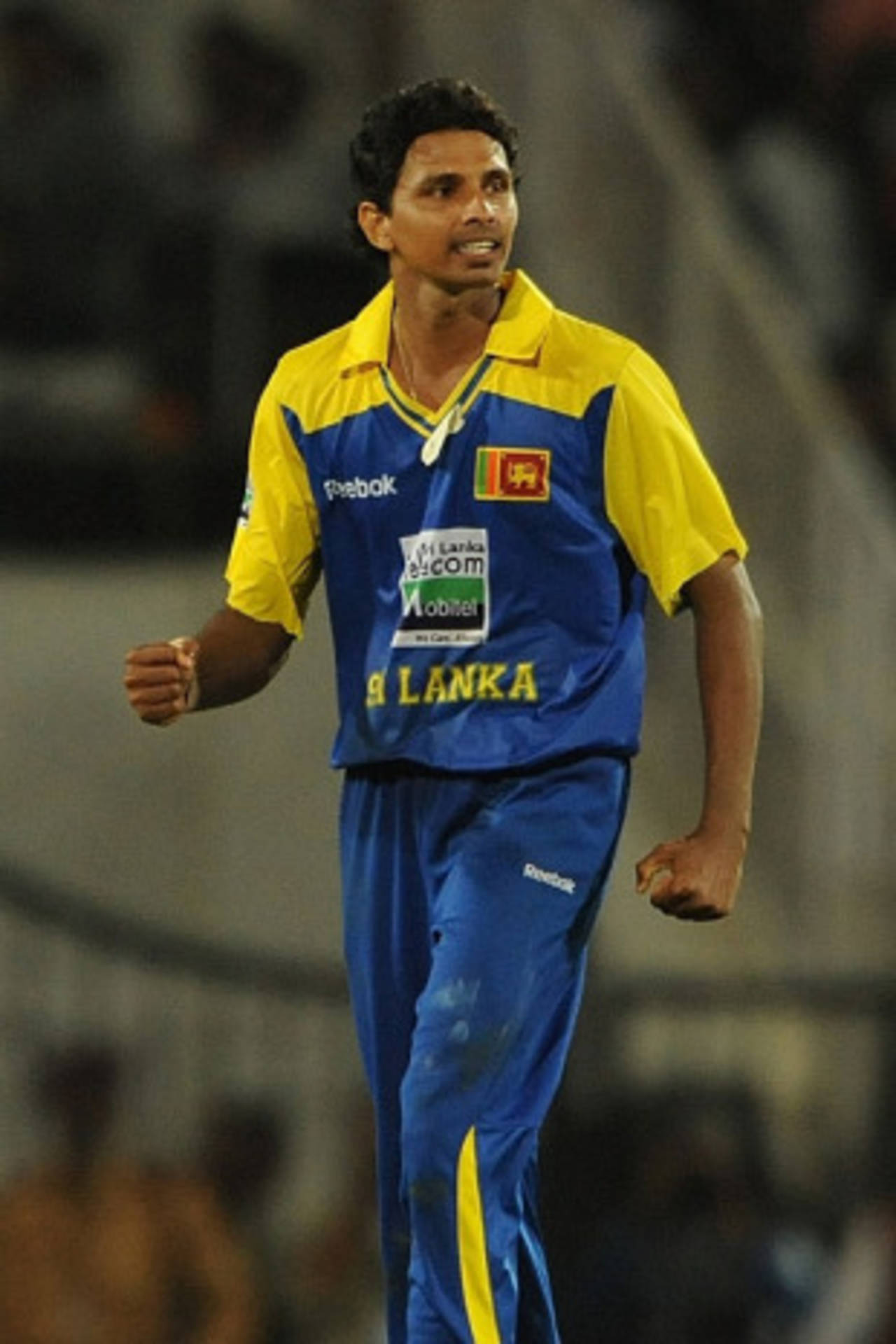Sri Lanka Cricket has attributed the success of suitable replacements in the present national team to its far-sighted policy in expanding its list of contracted players from 32 to 76 since May last year.
Players like offspinner Suraj Randiv, allrounders Thissara Perera and Muthumudalige Pushpakumara, fast bowler Suranga Lakmal and batsman Lahiru Thirimanne have lived up to expectations after filling in as replacements in the injury-stricken Sri Lankan team on their tours to India and Bangladesh. With the number of injuries mounting, batsmen Dinesh Chandimal and Mahela Udawatte have joined the national team in Bangladesh as reinforcements for the remainder of the tri-nation series.
SLC's head coach Jerome Jayaratne said the injuries helped open a window for young players to display their skills at international level. "These injuries, although it is not the right thing to say, helped us to expose these young players because they hardly get an opportunity when the established players are fit," Jayaratne said.
SLC secretary Nishantha Ranatunga said when the present set of administrators took office in April, only the Sri Lanka and the Sri Lanka A team players were on contract with the board. "We thought if we are to bridge the gap between the national cricketers and the potential national cricketers we needed to create an environment where they can compete with full-time professional cricketers and, at the same time, have a smooth transition," Ranatunga said. "What we decided was to expand the number of contracted players with SLC and provide them with suitable remuneration and, at the same time, coaching and practice facilities as the national cricketers so that, when the call-up came, they would be ready at any given time to replace anyone from the senior squad.
"Today this concept has borne fruit to the extent that the performances of these younger players is putting pressure on the seniors for places in the national team, and some of the seniors don't even want to take a rest between matches."
Ranatunga added the number of contracted players was expanded and classified into five categories - Sri Lanka (20 players), Sri Lanka A (15), Development (17), Academy (15) and Twenty20 (9). This included 15 potential cricketers earning contracts immediately after their school careers.
The top national cricketers earn as much as around US$110,000 annually, and the lowest return for an A squad player is an estimated US$10,500. The Development squad player earns a monthly wage of Rs.60,000 (approx. US$530) and a Twenty20 squad player Rs.100,000 (approx. US$ 875). Overall, SLC spends in the region of US$ 2.3 million annually on contracts alone, according to sources. In addition, the contracted players in the Development and Academy squads receive cricket equipment worth Rs.80,000 (approx. US$700) each.
Randiv and Udawatte are categorized as Sri Lanka A players; Lakmal, Pushpakumara and Thirimanne are part of the Development category and Perera and Chandimal have been classified as Academy players.
"What we realized is we lose several potential cricketers when they find employment elsewhere and, as a result, don't find the time to commit themselves to playing cricket," Ranatunga said. "To address this trend we decided to contract the potential players into the Academy and provide them with a monthly allowance of about Rs. 40,000 (approx.US$350), making them full-time professional cricketers. The game is no longer confined to the high-profile groups but has extended to middle and lower income groups.
"These different squads are provided with a similar coaching staff and facilities as the senior squad and given enough exposure by way of tours. In addition they also receive training in IT (computer) and English, public speaking, etiquette, financial management, motivation etc so that they develop other skills also and gain employment in different fields after their playing career."
Ranatunga praised the role played by the junior selection committee headed by Sunil Wikramanayake in identifying the future talented cricketers.
"We want to expand this concept to the provinces and have at least 100 contracted players so that the player remains in his province and develops his skills as a cricketer instead of coming to Colombo. If you take the national teams, 90% of the cricketers are from the outstation. It is a costly exercise but it is the right way forward."
